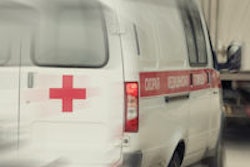
PACS not only improves efficiency and clinical decision-making but also shortens hospital stays, a study from Saudi Arabia has found. Major challenges to PACS usage remain, however, particularly the time taken to find images, recurrent system downtime, and insufficient training.
At present, PACS has been implemented in 89 Ministry of Health (MoH) hospitals in Saudi Arabia over the past 10 years, and plans to implement PACS across the country in a national network are gaining momentum. Given the lack of any previous national or local assessment of PACS in the country, the aim was to study performance and implementation with a view to establishing recommendations for optimizing quality, noted lead author Zainab Alalawi, researcher at the King Saud University, and master of the Health Informatics Track.
"Today, PACS is used widely in Saudi Arabia's hospitals and the MoH plans to implement this system across its 296 hospitals. This study sample has provided a clear idea about use from two perspectives: the best project management approaches for such systems, and usage within a PACS-connected facility, namely the level of transition from a paper/film environment to an electronic environment," she told AuntMinnieEurope.com. "This assessment is very important because it provides insight into the current status of PACS in Saudi Arabia as well as reliable recommendations for implementation and adoption of PACS across the country."
 Over a 100 PACS administrators have undergone PACS Administrators Registry and Certification Association (PARCA) training and received Certified PACS Associate (CPAS) certification in Saudi Arabia. Image courtesy of Zainab Alalawi.
Over a 100 PACS administrators have undergone PACS Administrators Registry and Certification Association (PARCA) training and received Certified PACS Associate (CPAS) certification in Saudi Arabia. Image courtesy of Zainab Alalawi.Alalawi stated these recommendations would prove crucial as the MoH moves forward with its e-Health portfolio and builds a National Medical Imaging Enterprise solution, the core platform for image exchange between institutions, which will connect all MoH hospitals and healthcare facilities.
Two separate questionnaires were sent to radiologists and referring physicians across three MoH hospitals around Riyadh; King Salman Hospital, Imam Abdulrahman Al-Faisal Hospital, and Al-Yamamah Hospital. The two sets of questionnaires differed by a few questions, due to the different role of physicians and radiologists. The opportunity to provide feedback was included in an invitation to provide comments at the end of some questions.

Excluding demographics, the physicians' survey contained 17 questions on PACS. These included three questions with a feedback opportunity and a request for summary feedback: Physicians were asked "if efficiency has improved because of PACS or not," "if PACS has improved ability to make decisions regarding patient care or not," and "if PACS has led to a reduction in patients' length of stay in hospital or not." They were also requested to write any other comments they wished to make about the PACS system in summary.
The radiologists' survey contained eight questions about PACS. These included one question that asked for feedback about efficiency and a request for summary feedback as follows: "Comment on how PACS has increased or decreased your reporting and consultation efficiency and write any other comments you may have on the PACS."
Results
The results were post online on 19 September and in the November 2016-December 2016 edition, of the Journal of Infection and Public Health (JIPH).
Of 183 physicians who responded, 84 (46%) also provided feedback via the open-ended questions, while 15 of 17 (88%) responding radiologists provided feedback for their open-ended questions. Given that some doctors provided more than one view of PACS within the same feedback, the number of views was greater than the total number of responses. The total number of views identified within the physician feedback was 206. For the radiologists, a total of 37 views were identified. Content analysis was used to assess the feedback on two themes: benefits and challenges.
The results from the physicians' questionnaires showed that in 70% (48/69) of views, PACS was perceived to improve their efficiency. Also, in 69% (36/52) of physicians' views, PACS was perceived to have improved their capacity to make decisions regarding patient care.
When asked to comment on whether using PACS had led to a reduction in patients' length of stay in hospital, 50.3% of physicians agreed and 79% (22/28) of views were positive while 6/28 (21%) were negative. In contrast, only 18% (10/57) of physicians' views were positive about PACS in summary feedback while 82% (47/57) reflected the challenges of PACS.
In comparison, all 15 radiologists responding to the efficiency question affirmed that PACS improved their efficiency, with 22/22 (100%) positive views identified. Furthermore 20% (3/15) of radiologists left positive feedback about PACS in summary while 80% (12/15) discussed challenges.
Training
The issue of insufficient training became apparent in some responses about PACS' functionality where it was clear that gaps in respondents' knowledge existed, according to the authors. Training already takes place across the 89 MoH hospitals in which PACS is implemented. The approach is three-tiered, and involves international certification of PACS administrators, local onsite training of six to 12 weeks by PACS vendors aimed at all users (physicians, nurses, IT staff, technicians, radiologists, consultants), and international training provided by PACS vendors at an advanced level for PACS administrators 12 months after a PACS site goes live. The authors believe this should be supplemented with ongoing web-based training and social media tools.
 Nabeel Misha from Jeddah.
Nabeel Misha from Jeddah.Nabeel Mishah, healthcare IT consultant at the King Abdul Aziz University Hospital in Jeddah, believes for the younger generations of medical staff, using PACS is second nature and training is well accepted.
"Most of the younger personnel are expert computer users and modern PACS systems are web based and user-friendly unlike the legacy PACS systems of old," he noted.
Mishah first introduced PACS to Saudi Arabia, championing the idea in the radiological community after the announcement at ECR of one of the world's first filmless radiology departments in Baltimore in 1995 and promoting awareness through educational efforts. He also led the first projects in the region.
PACS in the country has come a long way since the first mini PACS were installed in the Arabian American Oil Company (ARAMCO) hospital in Dahran in 1997, and then in Al Salamah Hospital in Jeddah in 1998, which paved the way for the first large-scale PACS with home grown RIS in 2001 at the King Abdul Aziz University. He points to the current existence of two regional PACS, the first in Asir that covers 33 sites and the second in Qaseem that covers seven centers.
He reports high acceptance of PACS both by patients and medical staff across the total 152 hospitals that have implemented it among the country's 465 centers (including state and private institutes).
"The future of PACS in nongovernmental centers is very promising as almost all private centers have upgraded or replaced their legacy imaging equipment with state-of- the-art DICOM-ready equipment. In addition, the price tag of PACS is much lower than it was five years ago. Many private hospital chains have started to implement teleradiology services to provide second opinions or cover radiology subspeciality cases," Mishah said. "Another attractive option for small and medium private centers will be cloud PACS services if they penetrate the market in the near future."
Key recommendations from Alalawi et al
- Adoption of a PACS in all healthcare facilities.
- Further pre- and poststudies to identify the perceived benefits and challenges before and after implementation of systems.
- Adoption of advanced PACS to facilitate home diagnosis and mobile images.
- In view of the perceived challenges, the authors also recommend:
- For training issues, establishing a complete onsite face-to-face training program, supported by internet-based tools, such as GoToMeeting and NetMeeting that facilitate distance training. Use of social media is also recommended for training purposes, e.g., creation of a YouTube channel about PACS to allow all staff to familiarize themselves with functionality.
- For system downtime issues, performing a thorough investigation of the problems and solutions.
- For difficulties finding images, constructing a unique client-registry to avoid redundancy in the file numbers.



















